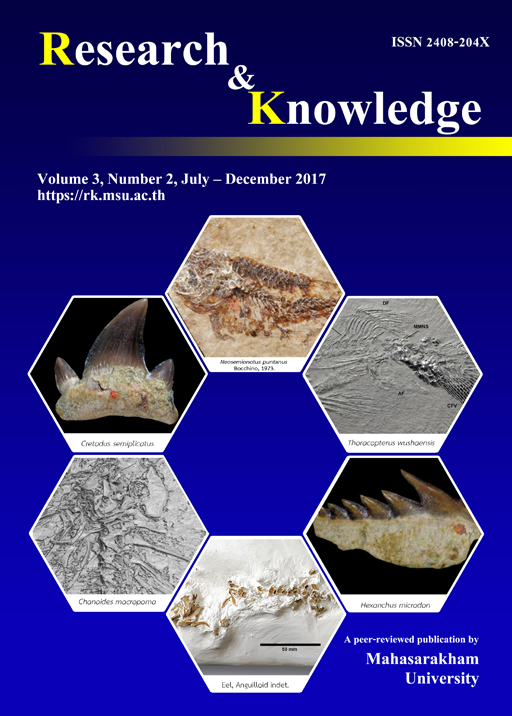First hybodont shark assemblage from the Cretaceous of Malaysia: updated report
Keywords:
Cretaceous, Heteroptychodus, Isanodus, Mukdahanodus, MalaysiaAbstract
A new hybodont assemblage was found in Cretaceous freshwater sediment of Peninsular Malaysia. This is the first discovery of Mesozoic nonmarine fishes from Malaysia. A faunal comparison with the Khorat Group has also been carried out. Approximately 100 specimens were prepared and examined in this study. The Malaysian material provides a finer understanding of morphological variation in the teeth of freshwater hybodont sharks from Southeastern Asia, as well as of their distribution. It points out for the first time to a biostratigraphical correlation between the Cretaceous freshwater deposits in Peninsular Malaysia with those of the Khorat Group in Thailand.
References
Cuny, G., Cavin, L. and Suteethorn, V. 2009. A new hybodont with a cutting dentition from the Lower Cretaceous of Thailand. Cretaceous Research 30, 515-520.
Cuny, G., Laojumpon, C., Cheychiw, O. and Lauprasert, K. 2010. Fossil vertebrate remains from Kut Island (Gulf of Thailand, Early Cretaceous). Cretaceous Research 31, 415-423.
Cuny, G., Suteethorn, V., Khamha, S., Buffetaut, E. and Philippe, M. 2006. A new hybodont shark assemblage from the Lower Cretaceous of Thailand. Historical Biology 18(1), 21-31
Khamha, S., Cuny, G. and Lauprasert, K. 2016. Revision of Isanodus paladeji (Elasmobranchii, Hybodontiformes) from the Lower Cretaceous of Thailand. Palaontol Z 90(3), 533-541
Teng, Y. H., Sone, M., Hirayama, R., Komatsu, T. and Yoshida, M. 2015. First Cretaceous fish fauna from Malaysia: Preliminary report. Paper presented at the 12th Symposium on Mesozoic Terrestrial Ecosystem Shenyang, China.
Yabe, H. and Obata, T. 1930. On some fossil fishes from the Cretaceous of Japan. Japanese Journal of Geology and Geography 8, 1-8.
Downloads
Published
How to Cite
Issue
Section
License

This work is licensed under a Creative Commons Attribution-NoDerivatives 4.0 International License.








